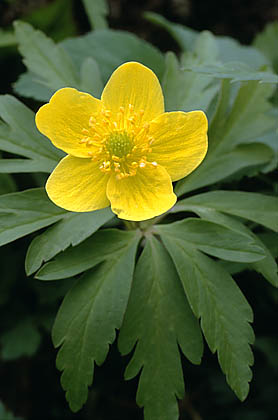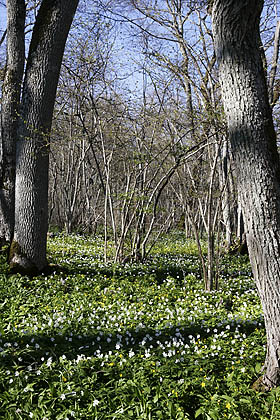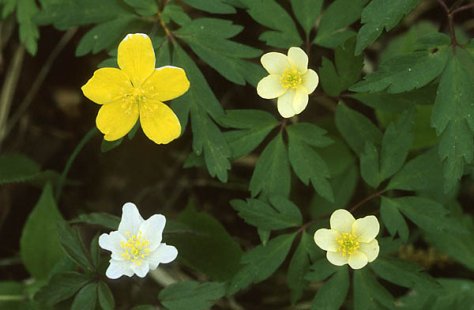About wood anemones
Photos: Arne Ader
Translation: Liis
Yellow wood anemone
Yellow wood anemone; Buttercup anemone Kollane ülane Anemone ranunculoides
Hybrid wood anemone Värdülane Anemone x lipsiensis
All anemones delight us with their truly long flowering period. An attentive observer may have noticed that in the beginning of the flowering the flowers will close in the evenings.- so the plant protects its pollen against moisture. How does this come about? The outer surface of the tepals grows in the beginning of evening and so the wood anemone closes its flower. In the morning the inner surface of the tepals grows and the flowers open, of course also becoming larger with this growth. With the withering of the stamens the growth of the flowers also ends and they no longer close in evenings.
Puhtu wood
Yellow wood anemones often grow in similar habitats as the white wood anemones, and together, but not everywhere because they prefer soils rich in humus, and so they don’t follow the white wood anemones into less fertile locations.
The flowers of the yellow wood anemone sometimes also grow in pairs on the same stem. It is not the petals that are yellow (as we might remember from learning about plants once) but thin tepals and their number is from five and upwards. The stalk leaves of the wood anemone are below the flowers and they almost wholly lack a protective layer because the plant needs its leaves only for a few months – at the end of July the summer rest period of the plant starts.
Wood anemone and yellow wood anemone and their intermediate hybrid
Where the relatives – the wood anemone and the yellow wood anemone – grow together they can cross-breed. This happens relatively seldom, the yellow wood anemone's pollen ripens a little later than its relative's. The flowers of the intermediate or bastard (an ugly name for the hybrid!) re noticeably paler.
For comparison, about the white wood anemone:











